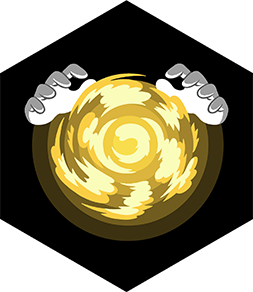Track the Key Card
Make a decorated key card tag and use a simple map, markers, and a logbook to track its movements around your home and analyze patterns.



Step-by-step guide to Track the Key Card
Step 1
Gather all materials and put them on a clear workspace so everything is easy to reach.
Step 2
Cut a tag shape about the size of a credit card from the cardstock using scissors.
Step 3
Use the hole punch to make a hole near the top center of the tag.
Step 4
Thread the ribbon or string through the hole and tie a loop so the tag can hang on keys.
Step 5
Decorate the front of the tag with bright colors stickers or drawings to make it easy to spot.
Step 6
Write a short ID code and your name on the back of the tag with the pen or pencil.
Step 7
Draw a simple map of your home on a sheet of paper showing the main rooms and pathways.
Step 8
Label each room on your map so you can match places to your logbook entries.
Step 9
Set up your logbook by drawing three columns and writing the headings Date Time and Location at the top.
Step 10
Attach the tag to your key card or keyring and place the keys in a starting spot like a hook or bowl.
Step 11
Each time you find the keys record the date time and location in your logbook and ask family members to tell you or leave a sticky note when they move the keys.
Step 12
After collecting entries for a few days place a sticker on your map for each recorded location count which room has the most stickers and write one sentence in your logbook about the pattern.
Step 13
Share photos of your decorated tag your map and your logbook on DIY.org to show your finished creation.
Final steps
You're almost there! Complete all the steps, bring your creation to life, post it, and conquer the challenge!


Help!?
What can we use if we don't have cardstock, a hole punch, or ribbon?
If you don't have cardstock, use a cereal-box or an old greeting card for a sturdy tag, make a small slit with scissors instead of a hole punch, and thread yarn, a shoelace, or a strip of fabric as the loop.
The ribbon keeps tearing or the hole rips—how do we fix it?
If the hole rips when threading the ribbon, reinforce the punched area with a piece of clear tape or a sticker reinforcer before punching or fold the cardstock at the top and punch through both layers to strengthen the tag.
How can we adapt this activity for younger or older kids?
For younger children have an adult pre-cut the tag, punch the hole, and let them decorate and place stickers on the map while older kids can record exact time stamps in the logbook, draw a scaled map, and analyze which room has the most stickers.
How can we extend or personalize the project?
To extend the activity personalize the decorated tag by laminating it with clear tape or adding a small bell, write the ID code and emergency contact on the back, color-code the map stickers, and turn your logbook entries into a simple bar chart before sharing photos on DIY.org.
Watch videos on how to Track the Key Card
Arma 3 Tutorial: Use a keycard to unlock a door
Facts about mapping and tracking for kids
🗺️ Early maps were hand-drawn works of art — making a simple home map practices the same skills as cartographers.
🧭 Geocaching is a real-world treasure-hunt game where players find hidden containers and log their visits — it turned outdoor exploring into a global game.
🔑 Key fobs (the little tags on keys) were invented to help identify keys quickly and can be decorated to make each one unique!
📓 Sailors kept 'ship's logs' to record trips; a home logbook does the same thing for tracking where a key card travels.
📊 Watching an object’s movements for a week can reveal patterns like favorite rooms or times of day when it moves most.
How do you do the Track the Key Card activity?
What materials do I need for the Track the Key Card activity?
What ages is the Track the Key Card activity suitable for?
What are the benefits and variations of the Track the Key Card activity?


One subscription, many ways to play and learn.
Only $6.99 after trial. No credit card required



